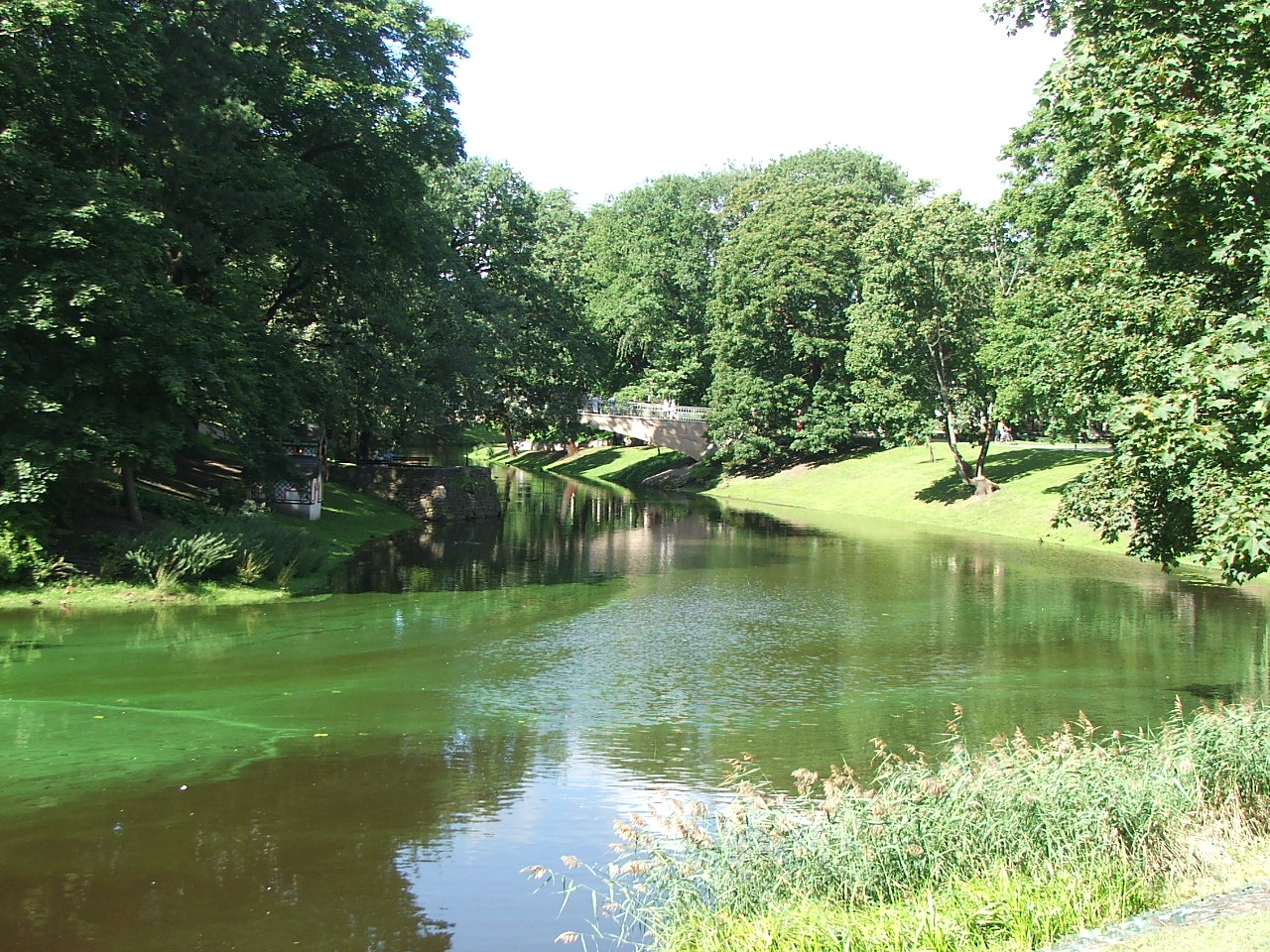Alex’s most difficult summary was the report from the last day of the conference where beaver density and trouble spots were discussed. He wrestled with this article with enormous care, and I think did an outstanding job. At one point he wondered if writing the names of professors who gave unpopular advice was a good idea, since the “internet is forever” and people might change their minds eventually. I was forced to admit that he is much, much kinder than I am, but assured him he could decide either way. (I have always considered the internet to be a snapshot in time, and if you were caught saying bad things about beavers in that snapshot you will just have to deal with the consequences!)
After some mulling, he decided to let his report stand. I offer it in it’s entirety with the only possible title:

The Good:
“Hot spots” were beaver sites called by Prof. Alius Ulevicius from the Faculty of Natural Sciences at Vilnius University, regarding the richness of nutrients and organic material as well as the structural alterations to eco-systems: Beavers “create specific complex habitats” consisting of different environment elements “like beaver ponds, standing dead wood and debris, beaver dams, lodges, etc.” Its impact on the hilly moraine landscape depends on its location more than its size.
The alterations created by beaver sites in relation to the landscape of densely inhabited beaver territories does not exceed population fluctuations of 6 to 7 percent according to Prof. Alius Ulevicius. Thus to be said for Lithuania, that went through a boost in beaver population starting in the mid-forties of last century leading to an estimated beaver population of about 89 k to 121 k individuals “near to its carrying capacity” counting an average 7.8 beaver sites per 10 square kilometers. (7.8 beaver sites per 3.86 sq.miles.) In comparison we learned that Minnesota, USA, has got an average of 10 beaver-sites per 10 sq.kilometers ( 3.86 US-sq.mi ) equaling about 2 and a half beaver sites per square-mile with alterations to the landscape in the surrounding territory of 13 percent.
Nevertheless you will find beaver sites in Lithuania not only at lake shores, river and stream banks but also on both sides of roads and highways, most likely lodges at open drains on surrounding meadows of slush green surrounded by healthy stands of aspen, willow, maple oak as well as pine forests as we were shown on our guided tour to neighboring beaver sites within about 15 sq.kilometers around Dubingiai Conference Center on September 23, 2009, as the final day of the 5th International Beaver symposium.
Despite beaver density, do not expect a flooded countryside with dead wood all around: Lithuania appeared to be one of most beautiful countries throughout Europe in all shades of green with its healthy meadows and forests, numerous lakes and almost undisturbed nature. Have a look on the Lithuanian website ( www.maps.lt ) screening the entire country far better than google maps. “The maximum effect of beaver impact should be expected where beavers are able to alter the hydrological characteristics of water bodies such as small streams, drainage canals and small swamps.”
Indeed the beaver impact on open water drainage succeeds to 18 percent and accelerates at lakes and stream banks: Research on selected 555 segments of 500 meters ( 550 US-yards ) each alongside lakes and streams showed 82 to 100 percent of beaver impact:Beaver made canals collect surface water thus providing larger wetlands from its additional water supply. The mean burrowing intensity was up to 30 burrows per kilometer ( 0.63 US-miles ) discharging in average 30 cubic-meters ( 1 cubic-meter is 1000 liters, 1 cubic-foot is about 28 liters, equaling about 1071 cubic feet ) of soil subsurface ground into the canal-bed.
By this means beavers create huge underground infrastructure for a number of forestrial vertebrates like otters and the invasive species of American mink that can frequently be found in Lithuania at beaver-sites feeding and resting, moreover sheltering and breeding in beaver-made burrows and lodges.
The Bad:
The negative effect of inadvertent habitat creation for those semi-aquatic predators was later mentioned by Prof. Vladim Siodorowich from National Academy of Sciences of Belarus, Minsk, on his investigations about beavers as prey supply. Most obviously is beaver impact on the plant communities of beaver meadows with its relatively high species richness due to increased soil dampness, acidity and nutrition. From a conservationists point of view any alterations in a territory with its indigenous plant and animal communities are to be evaluated critically.
Prof Ulevicius called “man and beaver” the main disturbance factors on eco-systems questioning which concept of land use will be the most appropriate regarding beavers that create “highly productive patches that attract and involve higher trophic levels on landscape scale” at the one end of the scale and man “highly favoring the effective use and export of accumulated goods” on the other end.
The Ugly:
Among the lecturers from Lithuania and other eastern European countries that focused only on disturbing impacts of beavers that were consolidated on their specific investigations was Prof. Romanus Lamsodas from Watermanagement Institute of Lithuanian University of Agriculture recommending “hydrologic regime” to be taken over beavers settling in open drains in localities relevant for concentrated agriculture .
Prof. Olgirda Belova from Lithuanian Forest Research Institute , Kaunas, demanded an “eliminating norm of 15 to 20 percent” of the beaver population by hunting and trapping for the reason that the main six woody species of the beaver diet are important for biodiversity conservation and need to be protected against growing beaver population. “Appropriate structured harvesting” topped it all and was suggested by Göran Hartman from Norwegian Institute for Nature Research in numbers of 15 to 20 percent of the beaver population as a self-financing method that could provide a positive incentive for landowners and will effect the stabilization of the beaver population. At the same instance he suggested distinct care “as the species is vulnerable to overharvesting.”
Whew, more Good:
This all was said before Skip Lisle and Duncan Halley talked about non-lethal methods of beaver-management. By the way, licensed live-trapper Sherri Tippie from Denver, CO was shown setting Hancock live-traps in the slide show removing beavers from creek of mid-town Aurora, CO , in the effort to relocate them to sheep ranchers in the Rocky Mountains for all the benefits beaver hot spot provide to animals and to landscape. Hopefully the well proved and cost effective methods of non-lethal beaver management will lead to awareness of viable alternatives to hydrologic regime, eliminating norms and structured harvesting in the mind of those “scientists on demand” as I would consider them according to their unacceptable conclusions, presumably under the pressure to value short-term financial savings higher than long-term ecological effects.
“The Americans are far ahead of us” was noted by one lecturer remarking on the positive effects of beaver-sites on areas experiencing drought from global warming.”Be prepared for the long game” according to an expert of the Scottish Beaver Trial.
Much Appreciated Guest Blogger: Alex Hiller
(Clint Eastwood comparisons entirely my own.)
Skip Lisle (left) & Alex Hiller (worth a dam t-shirt) at the 5th Annual Beaver Symposium


















































